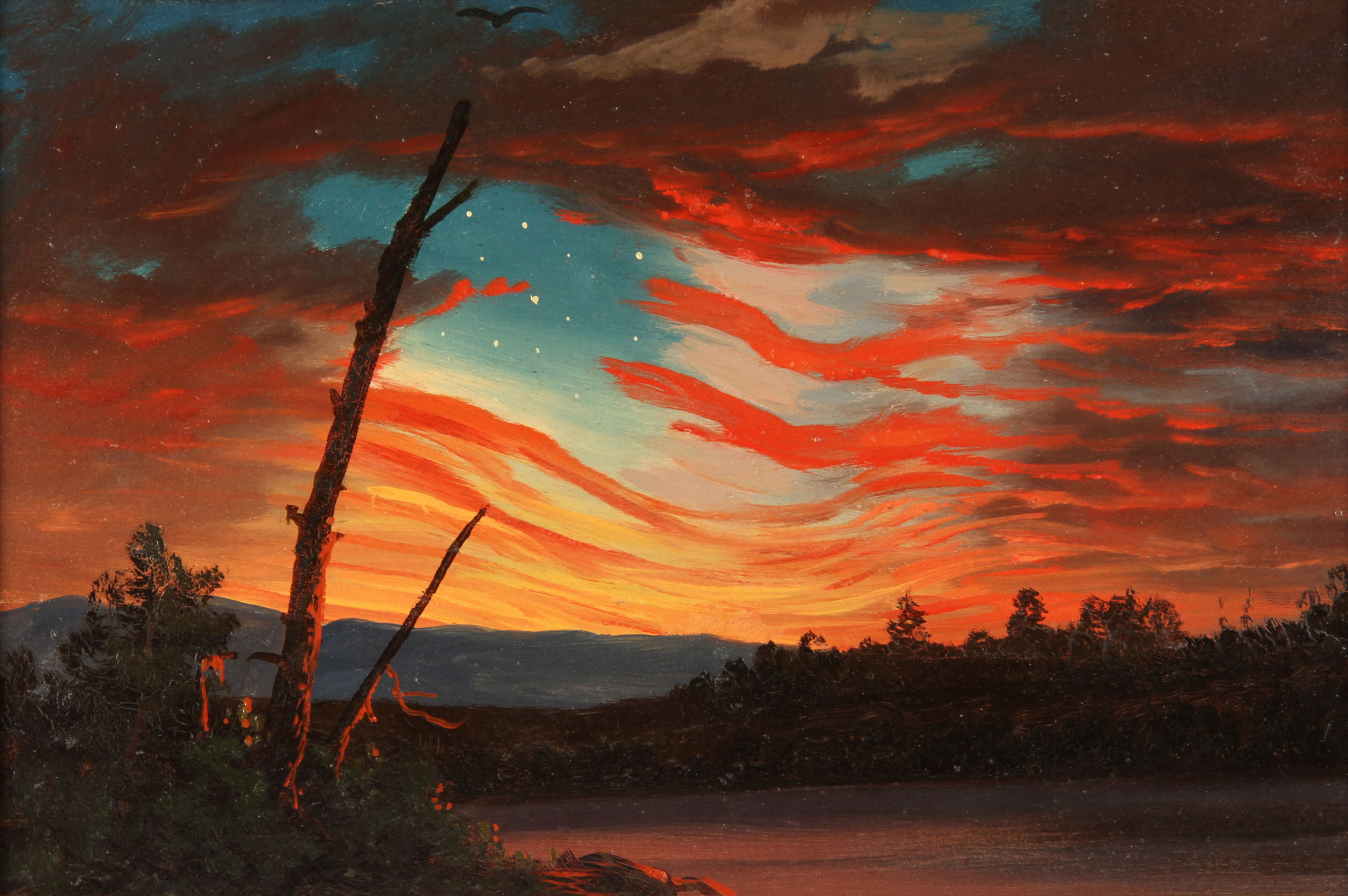Summer in the city is not everyone’s cup of iced tea, but it’s a great time to catch up on what you’ve been missing, particularly at The Metropolitan Museum of Art, which is now open seven days a week. With air conditioning.
Two shows in particular are ideal for the upcoming Yankee Doodle Day weekend – “Photography and the American Civil War” and “The Civil War and American Art” (both on view through Sept. 2). In a sense, they are perfect complements to each other, with the painting show providing the Technicolor to the photography show’s film noir grit.
Designed to appear as if you’re inside a field tent, “Photography and the American Civil War” features more than 200 works that are hard to look at. Images of slaves bearing their gnarled backs to the camera, skeletal prisoners of wars, bodies segmented and decomposing on the battlefields, cities gone with the wind: Sometimes you have to turn away. And yet, as you walk among these images or listen to visitors talk in the galleries you can’t help but be reminded that we, our union, the casual way in which we take for granted the freedom to sit or stroll and express our opinions – none of it would have been possible without the people in these photographs. So turn away if you have to, but turn back and look closely.
“The Civil War and American Art” paints that time with a broader brush – literally. The artists of the era, who included the members of the Hudson River School of landscape painting, weren’t interested in capturing the atrocities of the battlefield, and anyway, painting can’t compete with photography when it comes to that kind of “breaking news.”
Still the paintings of the period serve as metaphors for the tensions and tragedies of the time. A particularly haunting example is Winslow Homer’s “The Cotton Pickers” (1876), whose golden haze and workers-in-a-field theme owe a great deal to Jean-Franćois Millet. But the interpretation is freshly American, with one of the cotton pickers looking out, musing, while the other gazes down. The loveliness of the women contrasts with the harshness of the labor – and the future – before them.
The Met is so many museums in one that you’re probably going to need several days just to see all the current shows, never mind the collections. Among those I wouldn’t miss isn’t even in the Fifth Avenue building. It’s the “Search for the Unicorn” (on view through Aug. 18) celebrating the 75th anniversary of The Cloisters, The Met’s medieval branch, located in Fort Tryon Park in northern Manhattan. The Cloisters’ “Unicorn Tapestries” are such a treasure, with their still vivid reds and greens, their rich allusions to virginity and the Christ narrative and the complex portrayal of the unicorn’s relationship to woman, who can be both madonna and lethal temptress. In The Cloisters’ arrangement, the unicorn is hunted, captured and gored. But don’t worry, he’s resurrected and lives happily ever after, albeit in his little corral.
Back in the Fifth Avenue building, you won’t want to miss another exploration of brutal male beauty. It’s “The Boxer” (on view through July 15), a display of the bronze “Boxer at Rest,” excavated in Rome in 1885, and a poignant anomaly of ancient Greek culture which celebrated the perfection of the male body. (Think the Apollo Belvedere.) Here, however, is a heroic Herculean type – nude save for the wrappings on his hands and the ancient equivalent of a jockstrap – his searching face puffy with bruises, his body dotted with a bloody patina. Seeing this magnificently moving work, I couldn’t help but think of the last lines of Simon and Garfunkel’s “The Boxer”:
“In the clearing stands a boxer
And a fighter by his trade
And he carries the reminders
Of ev’ry glove that layed him down
Or cut him till he cried out
In his anger and his shame
” ‘I am leaving, I am leaving’
But the fighter still remains.”
For more on The Met, visit metmuseum.org. And for WAG’s take on The Met’s “PUNK: Chaos to Couture” (on view through Aug. 14), check out Class and Sass in our July “Hot Tomatoes” issue plus a “PUNK” show review and its role in foreshadowing fall fashion in our August “S’wellness” issue.
– Georgette Gouveia


